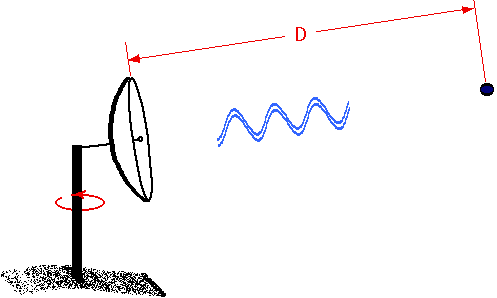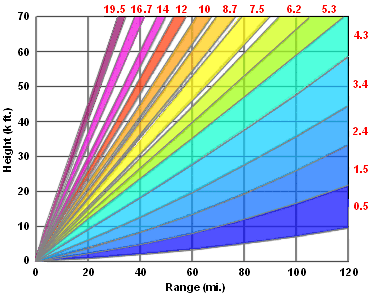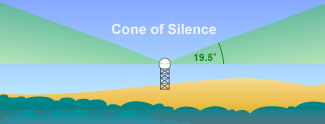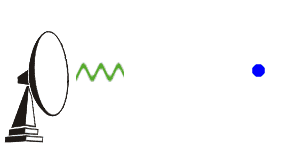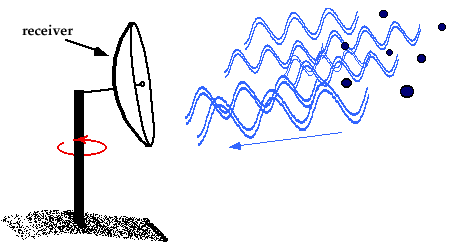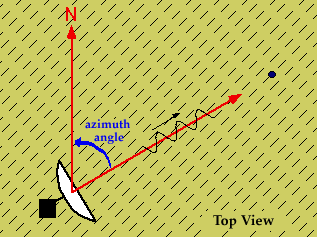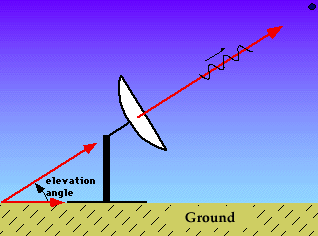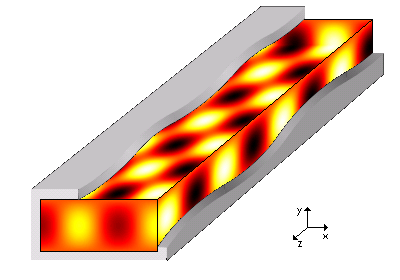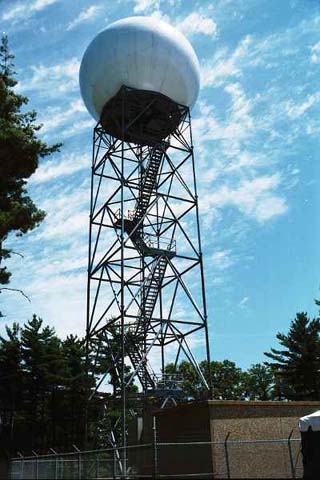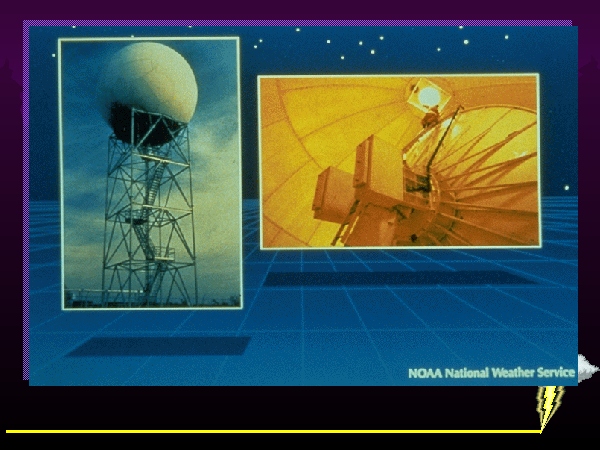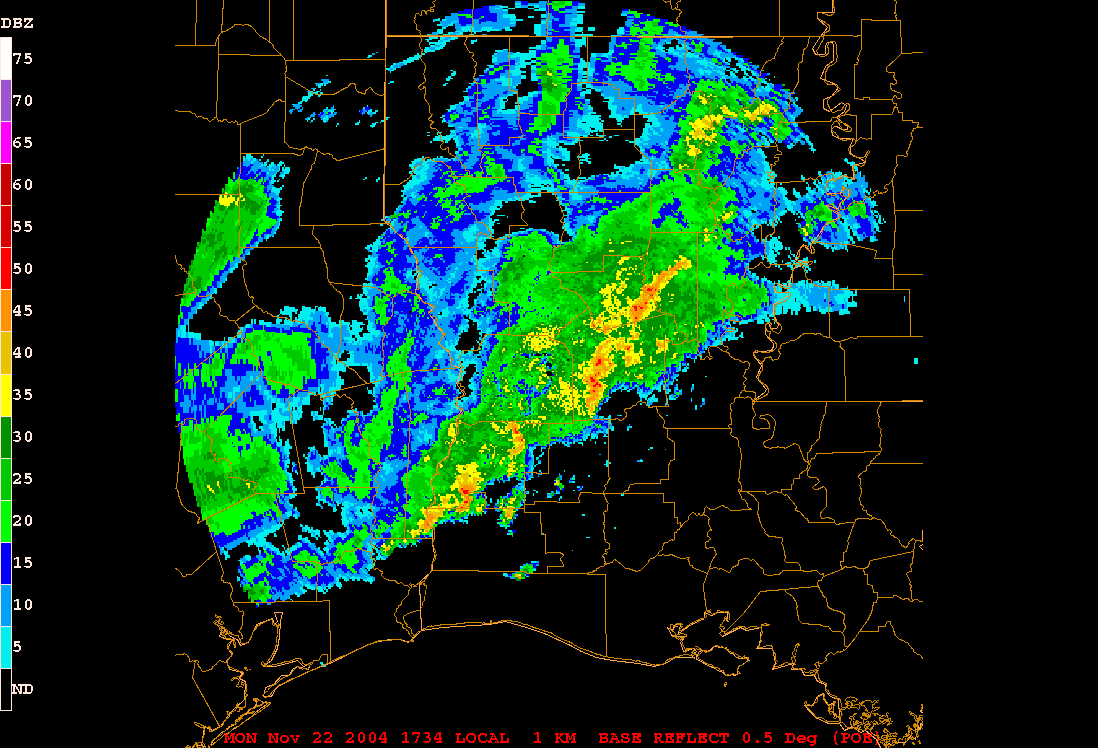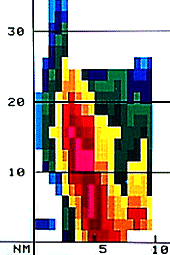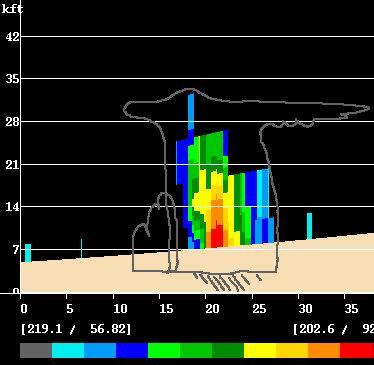| Band Name |
Frequency Range |
Wavelength Range |
Notes |
| HF |
3-30 MHz |
10-100 m |
coastal radar systems, over-the-horizon (OTH) radars;
'high frequency' |
| P |
< 300 MHz |
1 m+ |
'P' for 'previous', applied retrospectively to early
radar systems |
| VHF |
50-330 MHz |
0.9-6 m |
very long range, ground penetrating; 'very high
frequency' |
| UHF |
300-1000 MHz |
0.3-1 m |
very long range (e.g. ballistic missile early
warning), ground penetrating, foliage penetrating;
'ultra high frequency' |
| L |
1-2 GHz |
15-30 cm |
long range air traffic control
and surveillance; 'L' for 'long' |
| S |
2-4 GHz |
7.5-15 cm |
terminal air traffic control, long range weather,
marine radar; 'S' for 'short' |
| C |
4-8 GHz |
3.75-7.5 cm |
Satellite transponders; a compromise (hence 'C')
between X and S bands; weather |
| X |
8-12 GHz |
2.5-3.75 cm |
missile guidance, marine radar, weather,
medium-resolution mapping and ground surveillance; in
the USA the narrow
range 10.525 GHz ±25 MHz is used for airport radar. Named X band
because the frequency was a secret during WW2. |
| Ku |
12-18 GHz |
1.67-2.5 cm |
high-resolution mapping, satellite altimetry;
frequency just under K band (hence 'u') |
| K |
18-27 GHz |
1.11-1.67 cm |
from German kurz, meaning 'short'; limited use
due to absorption by water vapor, so Ku and Ka
were used instead for surveillance. K-band is used for
detecting clouds by meteorologists, and by police for
detecting speeding motorists. K-band radar guns operate
at 24.150 ± 0.100 GHz. |
| Ka |
27-40 GHz |
0.75-1.11 cm |
mapping, short range, airport surveillance; frequency
just above K band (hence 'a') Photo radar, used to
trigger cameras which take pictures of license plates of
cars running red lights, operates at 34.300 ± 0.100 GHz. |
| mm |
40-300 GHz |
7.5 mm - 1 mm |
millimeter band, subdivided as below. The letter
designators appear to be random, and the frequency
ranges dependent on waveguide size. Multiple letters are
assigned to these bands by different groups. These are
from Baytron, a now defunct company that made test
equipment. |
| Q |
40-60 GHz |
7.5 mm - 5 mm |
Used for military communication. |
| V |
50-75 GHz |
6.0 - 4 mm |
Very strongly absorbed by the atmosphere. |
| E |
60-90 GHz |
6.0 - 3.33 mm |
| W |
75-110 GHz |
2.7 - 4.0 mm |
used as a visual sensor for experimental autonomous
vehicles, high-resolution meteorological observation,
and imaging. |
